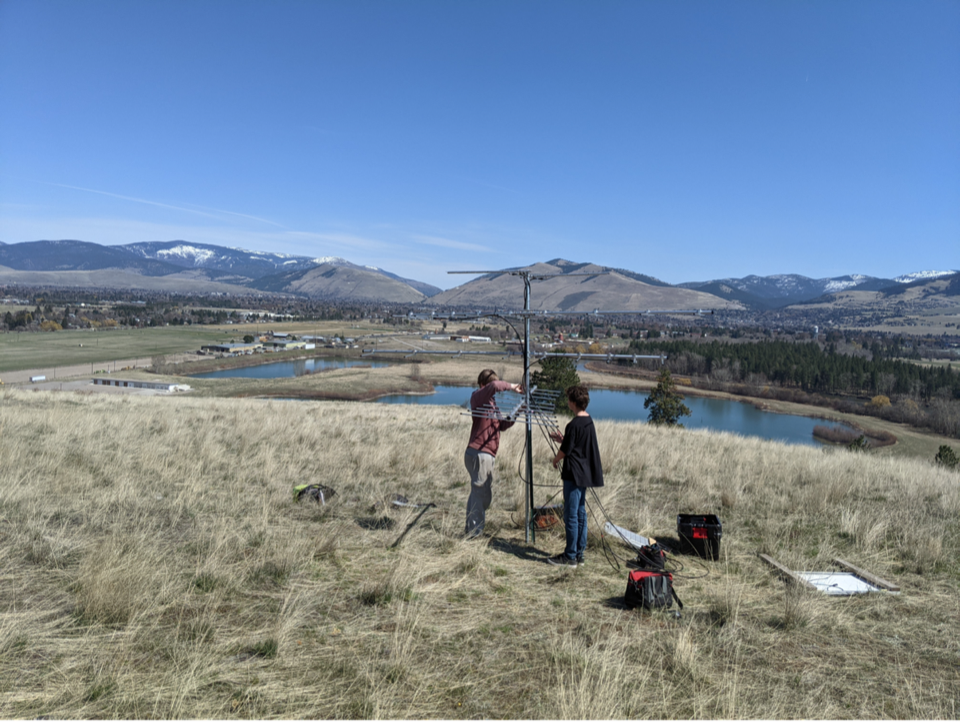
Rapid Motus Expansion in 2021
Block title
Avian Ecology
We seek to understand how birds use the habitats available and how that will change as we work to create more diverse plant communities. We also host researchers that document migrations of raptors and songbirds across MPG.
In this section of the research pages, you will find links to reports and updates from all the researchers involved with avian ecology, posted chronologically. The links will show you more in-depth reports on our findings. The three main projects covered here are:
Songbird Counts- A grid of sampling points covers MPG with 560 points. We visit each point 3 times a year, once in winter and twice during the songbird breeding season. We record, by ear or by sight, all the birds near that point for 10 minutes.
Songbird Banding- The University of Montana Bird Ecology Lab, UMBEL, runs several trapping stations at MPG as part of their regional songbird monitoring program. UMBEL sets up very fine nets that are nearly invisible to birds in brushy habitats. Songbirds fly into the nets and become entangled. The researchers take the birds from the nets and affix a numbered band to their leg before releasing them.
Raptor Research- The Raptor View Research Institute monitors raptor populations on MPG and counts raptors that migrate past MPG in the spring and fall. Raptor View researchers have placed transmitters on osprey and golden eagles that use the Bitterroot Valley.
We're close to reaching 30 active Motus receivers within our MPG Ranch-funded Intermountain West Collaborative (IWC) Motus Project. As we’ve expanded the Motus network, we’ve begun supporting multiple spin-off projects across the West. These recent expansions help advance the mission of Partners in Flight’s Western Working Group, whose Motus Initiative aims to inform conservation actions. The Western Working Group allows scientists to collaborate on wildlife studies using the Motus network in the western United States, Canada, Mexico, and Central America.
This map shows all active (light blue dots) and future Motus stations funded by MPG Ranch (dark orange dots) or by various partners (light orange dots). Our partners include the Wyoming Research Cooperative Unit, McNary National Wildlife Refuge, Smithsonian’s Conservation Biology Institute at American Prairie Reserve, and US Fish & Wildlife Service.
Our major expansion efforts this year started locally. Despite having a dense Motus coverage in the Bitterroot Valley, our IWC network didn’t have much coverage to the east or north. Last week, we installed our first Missoula Motus station at McCauley Butte. The antenna range encompasses the entire Missoula Valley to the north, east, and south.
Students from Learning With Meaning helped install the Motus station at McCauley Butte, Missoula, MT. The station’s detection range will include Fort Missoula and the city of Missoula (both in the background).
In the coming weeks, we will expand our coverage outside of Missoula. Our prospective sites include Evaro Hill to the west and along the Clark Fork River to the east, first near Rock Creek and then by Drummond.
This map demonstrates the approximate antenna ranges of the McCauley Butte Motus station. The lobes represent different antennas with varying capacities. The long lobes are 20 km long (12.4 miles), and the shorter lobes are 10 km long (6.8 miles).
Many of our tagged birds leave MPG Ranch without being detected again. We don’t plan on detecting all tagged wildlife, but we do know several birds tagged at MPG Ranch were recorded farther east than we expected. Some of them ended up in Missouri, Michigan, Louisiana, and Florida. To fill this easterly gap, we plan to expand our Motus network in southwest Montana along interstate I-15.
We hope to continue working with Idaho Transportation Department to install more Motus stations at rest areas and other structures on interstate highways. In this photo, I’m installing a station at the ITD-Cold Water Rest Area on Interstate I- 84 outside American Falls, ID.
Motus Acknowledgements
We extend a warm thank you to the McCauley Butte landowner, Annie Graham, founder and director of Learning With Meaning. Another special thank you goes to the volunteers and students who helped with this project and to Dan Mummey from MPG Ranch, Jenny Toffelson from Five Valley Land Trust, and Edward Monnig for facilitating all communication and agreements for this site.
At the Cold Water Treatment ITD Motus station, we would like to acknowledge everyone at ITD, including Alissa Salmore, Greydon Wright, Trent Hansen, and crew for their help.
























